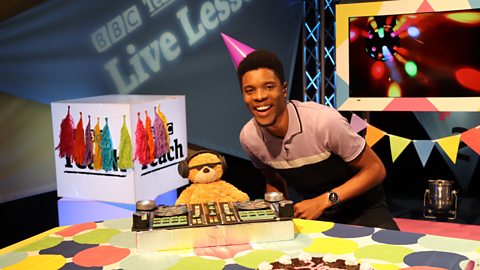
The best way to take care of our wellbeing is to insert simple things into our day-to-day routines.
Children's wellbeing specialist Shahana Knight explains five ways to support children with their wellbeing.
The last six months have been a very unusual time for everyone, and now with schools re-opening, children have a lot to process. Not only will they be working through their experiences of lockdown, but they will also be managing the changes in their school lives, like not being able to play in the playground in the mornings, or having to sit on a small table without their friends, or even eating in the classroom instead of in the dinner hall.
During this transition they are likely to experience a range of emotions, from excitement to anxiety. Often when we have a lot to deal with in our lives, it can affect our thoughts and our wellbeing. We might find ourselves thinking more negatively or not feeling settled and happy because of the changes.
It is important that we encourage and teach children to be aware of their thoughts and take care of their own wellbeing. This is a valuable lesson for life and will help them to develop their emotional intelligence and to cope with stress or difficulties in their lives as they grow.

≥…»ÀøÏ ÷ Teach's Live Lesson Wellbeing: Bouncing back to class, made in partnership with the Premier League, is still available to watch at any time with your class. It's designed to help primary school pupils and teachers transition back to school, and look hopefully towards the future whilst using resilience and exercise to achieve positive wellbeing.
Wellbeing describes our feelings of wellness and happiness. When we have positive wellbeing we feel good, we can cope with difficulties, problem-solve and think clearly. We know we are struggling with our wellbeing when we find ourselves snapping at others, feeling stressed and low or unhappy. The best way to take care of our wellbeing is to insert simple things into our day-to-day routines.
Here are five things that you can help children to do which will support their wellbeing.
1. Keep learning
Learning new things doesn’t just mean in lessons at school, it also means developing new skills and being inquisitive about the world. This can be through activities or challenges we set ourselves, like learning to ride a bike or mastering a new recipe. That feeling of success sends dopamine, and other hormones that enhance wellbeing, to our brain and makes us feel good. The act of learning can sometimes be tricky for children and they can feel frustrated when they fail. It is important to teach children that failure is a stepping stone to success, and that even the greatest minds have failed hundreds of times!
Encourage children to explore their own interests or natural talents. If they love to cook, you could encourage them to learn new recipes. Parents could start a weekend cooking lesson, or teachers could start a cooking club. Maybe a child you know loves to draw. Encourage them to learn new techniques by watching videos online or completing an online drawing course. You could even join in with their hobby. When adults show an interest in children’s passions it helps increase their feelings of wellbeing because it validates their individuality and makes them feel noticed.
2. Take notice
Being tuned in to how you feel day-to-day and noticing negative thoughts helps children be more self-aware and in control. It is very overwhelming when we have loads of difficult emotions and no way of processing them.
A great way to teach children how to take notice of their feelings is to write a feelings journal. Start or end the day by asking your class or your child to write or draw how they feel in a special diary. Ask them to notice their thoughts and try to reframe any negative ones. Remind them that they are in charge of their thoughts and they can change them. Give them examples of how to do this, so “I can’t do this” becomes “I can do this, I just need to keep trying”, or “I'm too shy to join in” becomes “My voice is important and needs to be heard".
3. Give to others
When we help others, our feeling of wellbeing increases. It is really rewarding when we see that our actions have had a positive impact on others and it makes us feel great inside.
A fun way to help children practise this is through random acts of kindness. Each week, set children a challenge to randomly do something nice for somebody. They could smile at a stranger or send a message or a card to an older relative or neighbour. Or start a pebble trail in a local park by painting messages of hope on small rocks and leaving them for people to find. If you are a teacher you could encourage the children to write a positive postcard to other classes or create a mini music video for another class to watch.
4. Be active
One of the quickest ways to feeling good is exercise! Getting the blood flowing through your body and your heart rate going releases feel-good hormones. Help get your children active by taking them out in nature for an hour each weekend. Make this fun and interesting by going on adventures. Can you find a forest to visit? Or get your wellies on and find a stream? Or if you’re brave you could walk up a hill in the countryside. If you're in a city, is there an adventure playground nearby or interesting walking routes that take you along pathways that buses and cars don't take?
Alongside PE lessons and sports clubs, teachers could explore opportunities for outdoor learning, either in the playground or a nearby location. Try making a fun obstacle course, keeping within social distancing guidelines - for example by getting children to work in their bubbles and see if they can work in teams to get to the end.
5. Connect with others
One of things that made lockdown so difficult was being unable to spend time with others. Being around our friends and family and sharing eye contact, laughter and talking is vital for wellbeing. Humans are social creatures and connection makes us feel loved, valued, heard and therefore happy. Face-to-face connection is very powerful and can often be undervalued in a world of technology.
That said, technology does offer many opportunities for social interaction. There are many free digital platforms which children can access on phones, tablets or laptops which will allow them to connect with their friends and play games remotely.
At home, try adding a Friday family night to your routine to increase feelings of connection and togetherness. Make it a routine to share a meal together and while you eat try playing games around the table like “What animal is in my head”. In this game, children have to guess the animal by asking questions about it. You could also play “Would you rather …?” by giving each other two scenarios to choose from, for example “Would you rather be able to fly above the clouds or swim in the sea?”. This game will get you all laughing and can become very inventive indeed!
Another idea is to introduce games night. Choose one night of the week to turn off the television and play games together as a family. Try to ensure this is a fun activity and doesn’t become too competitive. If you are a teacher, you could also use these ideas as part of your after-school clubs.
And while in school curriculum catch-up will be a priority for teachers and pupils this term, finding time for shared playful activities will help children to reconnect with their classmates and encourage a sense of belonging. It will also boost confidence and have a positive impact on their ability to learn. Things have been difficult lately and stress reduces our capacity to retain information.
Introduce fun activities like a class dance party. Find time in the day to stop for a moment, play an upbeat song (The Soca Boys - Follow the Leader is a good one) and get the children to stand up in a space and do their best moves! This is a brilliant way to boost mood-enhancing hormones, get the children laughing and get their brains ready for learning at the same time. A top tip would be to start with some songs that have instructions and actions in them to build up everybody’s confidence.
A final suggestion would be to play a game together like ‘Stop the Bus’. Give every child a piece of paper that is split into columns with headings like name, place, object, animal. Ask one child to go through the alphabet in their head, and when you shout stop see which letter they have landed on. The challenge for the children is to fill in the columns with as many words as they can think of that start with that letter in two minutes! Answers that are unique get 10 points, while answers that are the same get five points. This is a sure way to get the children laughing and connecting in a fun, safe way.
There are many things that you can do to increase your feelings of wellbeing and hopefully you have found some ideas here to help you get started. Remember, implementing these activities is only part of what will help maintain positive wellbeing for children. It is even more important to teach children why they are taking part in these activities and to help them notice and acknowledge the impact it has on their wellbeing. Talk to them about why you are doing these activities, and this will help them adopt these strategies in their lives as they grow.
Shahana Knight is a childhood trauma specialist and founder and director of - a mental health service for children and young people. She is creator of the Therapeutic School Award and The Wellbeing Curriculum through which she works with schools across England to put children's wellbeing at the core of education, pioneering a vision for all schools to become therapeutic schools. She sits on two foster care panels, is a regular writer for Headteacher Update and a school governor. You can follow her on Twitter @shahana_tpc

Wellbeing: Bouncing back to class
Get ready for a new wellbeing-themed Live Lesson on Monday, 14th September.

≥…»ÀøÏ ÷ Teach Live Lessons - 2021/2022. document
Information about our new series of Live Lessons, to bring schools and year groups together for shared learning.

The Brain Lab. collection
A collection of short films for primary schools about mindfulness and achieving a growth mindset.
